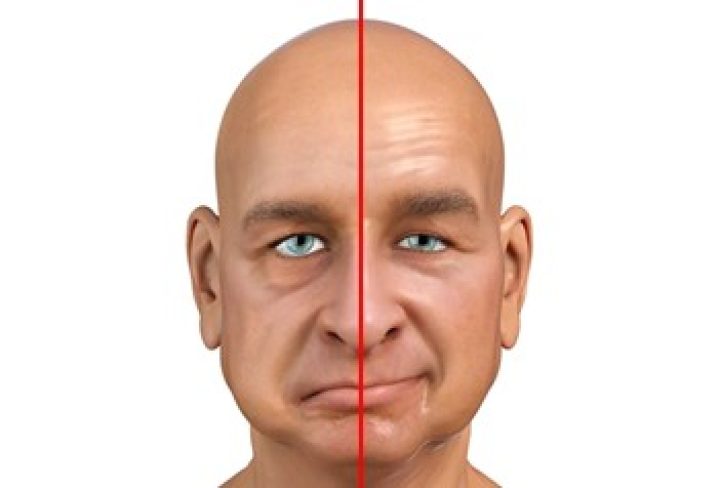Bell’s palsy occurs because of damage to the facial nerve. It causes a temporary weakness or paralysis of the facial muscles and affects one side of your face.
Bell’s palsy can occur at any age and affect men and women equally.
Most people with Bell’s palsy recover full facial strength and expression within a few months or weeks.
Signs and Symptoms of Bell’s Palsy
Symptoms vary among individuals and can be mild weakness or total paralysis of the affected side.
Common symptoms are:
- Impaired ability to smile, squint, blink
- Excessive tearing
- Loss of facial sensation
- Headache
- Drooping eyelid on the affected side
- Dry eye or dry mouth
- Drooling
- Pain around the ear
- Defective hearing or sense of taste
- Inability to wrinkle the forehead
The symptoms appear suddenly, and you may notice them when you wake up or try to eat or drink.
Causes of Bell’s Palsy
Bell’s palsy occurs due to swelling and compression of the facial nerve causing facial weakness or paralysis.
The direct cause of this nerve damage is unknown, but the viral infection most likely triggers it in most cases.
Common triggers include,
- Stress
- Fever
- Trauma
- Tooth Extractions
- HIV
- Cold sores (herpes simplex virus)
- Shingles (herpes zoster virus)
- Lyme Disease (Bacterial Infection)
Risk factors for Bell’s palsy
Bell’s palsy typically affects men and women equally.
- Family History
- Pregnancy
- Diabetes
- Lung Infection
- High Blood Pressure
- Obesity
Diagnosis of Bell’s Palsy
There is no specific laboratory test to confirm the diagnosis of Bell’s palsy.
Your doctor can confirm the diagnosis based on symptoms and physical examination.
Tests to rule out other causes include,
- Blood tests – To check for Lyme disease or sarcoidosis
- Electromyography (EMG) – To measure nerve activity and damage
- MRI or CT scan – To rule out stroke or other causes of nerve damage
It is essential to rule out the presence of a stroke or tumor for appropriate treatment.
Bell’s Palsy Treatment
Bell’s palsy symptoms improve without treatment in most cases. But the muscles can take several weeks or months to regain the normal strength of the facial muscles.
Your doctor may recommend the following Bell’s palsy medications for the relief of symptoms and faster Bell’s palsy recovery:
Medicines
- Oral corticosteroids help to reduce nerve swelling and regain facial movement faster
- Antiviral medications may speed recovery
Surgery
- Decompression surgery eases pressure on the nerve (rarely performed)
- Plastic surgery procedures to correct facial asymmetry and eyelid closure
Bell’s palsy Eye Treatment
- Eyedrops to soothe dry and irritated eyes
- Eye ointment to lubricate eyes overnight
- An eye patch to protect from irritants and injuries
Eye care is very important if you cannot close your eyelids fully!
Dos and Don’ts in Managing Bell’s Palsy
Do’s
- Do get enough sleep
- Do protect your eye
- Do eliminate all possible stresses
- Do consume soft foods for easy chewing
Dont’s
- Do not drink through a straw
- Do not chew gum
- Do not overwork your facial muscles
- Do not stop corticosteroids abruptly
Bell’s palsy can be a very difficult and debilitating condition to face, but with proper medical care and support, it can be managed. There is still much to be learned about Bell’s palsy, but it is important to remain hopeful and proactive in seeking treatment. While there is no cure for Bell’s palsy, there are treatments available to help manage symptoms and improve quality of life.


